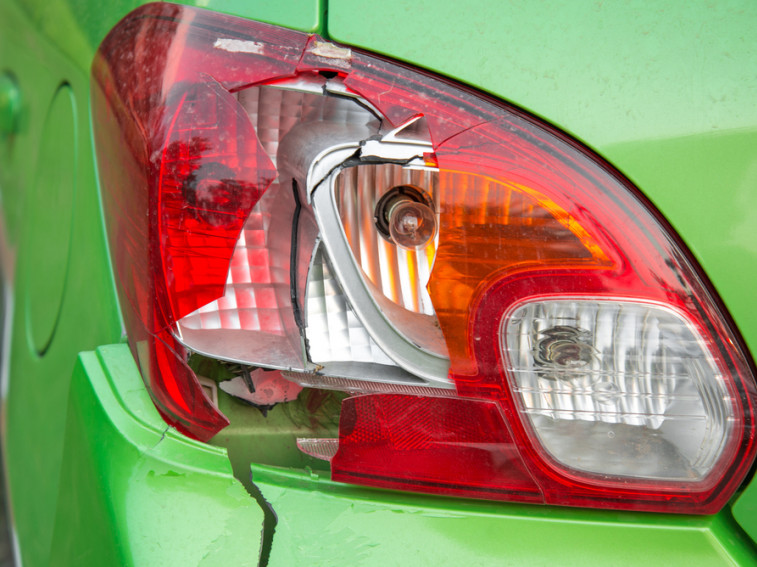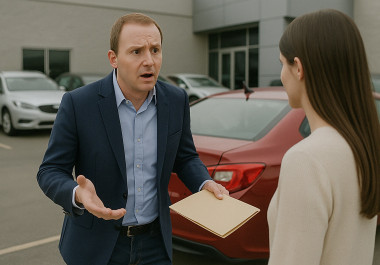Light damaged cars might not be everyone’s first choice when looking to buy a new car, but don’t dismiss them offhand. If the damage is subtle or easily repairable - and by definition, most of it is - it can be a great way to save money on a new car.
Of course, before you commit to a firm decision on a lightly damaged car, it’s worth knowing what you’re getting into first. Here at RAW2K, that’s where we can help. As experts at online vehicle auctions, we’ve got over 20 years of experienced with light damaged cars - we’ve answered your most pressing questions below!
Why buy a light damaged car?
Cost is a big factor. Light damaged cars are cheaper than their brand new counterparts, which means that buyers can save hundreds or even thousands if they’re looking for a new roadworthy car. They can be especially attractive to first-time buyers, for whom cosmetic appearance might not be such a high priority.
Mechanics and other professional buyers, meanwhile, often favour lightly damaged cars because they’re quick and easy to fix, which means they can be quickly ‘flipped’ (that is, sold on) for a quick profit. Considering their already low buying price, that enables mechanics to easily maximise their earnings.
However, when buying a light damaged car, it’s still worth conducting extensive research into the background and history of the car, so that you don’t have to deal with any unpleasant surprises further on down the line. In other words, make sure it’s capable (or will be capable) of what you plan to use it for.
While some people are happy to browse unrecorded light damage cars for sale, wherever possible, most prefer to know the ABI category of their potential purchase. There are four main ABI categories, all set by the Association of British Insurers. Their purpose is intended to give an immediate, rough indication of the car’s level of damage. These are:
Category A - Catastrophic damage. Scrap only. No parts can be removed.
Category B - Serious structural damage. Car must be scrapped, but parts can be removed for use on other vehicles.
Category S - Notable structural damage. Can be made roadworthy again, but cost to do so will exceed the car’s total worth.
Category N - Non-structural damage. Can be made roadworthy again, but cost to do so will exceed the car’s total worth.
It’s worth noting that Category C and D are missing from this list, having been officially replaced with Category N and S. These changed in October 2017, but the old names are still in wide enough circulation that it can sometimes confuse buyers!
What’s classed as light damage?
Obviously, there’s some wiggle room with this term because you’ll probably find various dealers and private sellers have their own interpretations. However, the definition from insurance companies and main dealers tends to be fairly consistent.
The following types of damage are all generally regarded as light damage:
- Rust
- Small scratches, scuffs and marks
- Cracked headlights or rear lights
- Paintwork damage
- Small components which need replacing
- Cracks or other damage to the windscreen
Generally of course, identifying light damage often just takes a bit of common sense. Most of it can be fixed without too much necessary expense or specialist expertise. However, don’t make the mistake of thinking light damage is insignificant. In fact, it can be quite dangerous (as we’ll go into a bit later on).
Light damage cars are generally placed into Category N, as by definition they’ve typically not suffered any structural damage.
What’s not classed as light damage?
Anything above light damage tends to be classed as either moderate damage, or heavy damage. Sometimes the boundaries between the two can be blurred, depending on the nature of the issue in question.

Some examples of moderate damage:
- Doors won’t open
- Airbags have deployed
- Windows are broken or missing
Examples of heavy damage:
- Engine damage
- Electrical issues
- Flood damage
- Fire damage
- Serious structural damage, such as a twisted chassis or broken axles
Cars with moderate damage can still often be classed as Category N, but those with heavy damage will typically be Category S (for structural damage) or even Category A or B, signalling that the damage is irreparable.
Can you drive a light damage car?
Sometimes, but not always. While issues like a cracked windscreen might not seem all that serious in themselves, if they have the potential to block your vision or otherwise distract you when you’re driving, they can be incredibly dangerous, and thus illegal. The safest option is always to get the car repaired as soon as possible, to avoid any potential for danger.
Here are some types of light damage which can be especially hazardous:
- Windscreen cracks
- Broken wing mirrors
- Damage to the bonnet latch
- Insecure doors
- Certain types of body damage
As you may know if you’ve ever had one, even a marginal crack in the windscreen can refract light, and block or impair your vision - increasing your chances of crashing. Similarly, wing mirrors which are cracked or broken are probably not helping you to properly maintain your awareness of the road around you, making your car dangerous and illegal to drive.
Also, anything which has damaged the latch of your bonnet may cause it to bounce open or fly up as you’re driving. Even if it only blocks your vision momentarily, that’s more than enough time to have deadly consequences. The same is true of unsecured doors; if they swing open while you’re in motion, you could distract or even strike another road user.
Body damage is the most common type of damage many drivers don’t bother to have repaired, and millions of people in the UK drive dented or scratched cars every year. However, if your car’s bodywork has any jagged edges or sharp points, that gives it the potential to harm other road users or passers by, which makes it illegal to drive.
Remember, light damage means that it’s relatively easy to repair - not that it’s not dangerous!
Is a light damage car the same as a damage repairable one?
Not necessarily. They overlap, but they’re not quite the same! Light damage is typically repairable, but not all repairable damage is light. Moderately damaged cars can still be classed as damage repairable cars for sale, and the same is true for heavily damaged cars. Obviously, though, the cost of repairing that damage will vary depending on how severe it is.
What does the law say about selling a light damage car?
The law has very strict requirements of commercial dealers, who must abide by the Consumer Rights Act of 2015. However, this doesn’t apply to private sales, including those you’d find in our own online car auctions here at RAW2K. It’s worth doing your research in advance, so you know what’s expected of you as a buyer!
Consumer Rights Act for commercial dealers
Taking over from the Sale of Goods Act, the Consumer Rights Act is the main legislation that covers sales of new and used cars from official dealers. It has several key requirements of dealers, namely in that the vehicles they sell must be:
- Of satisfactory quality
- Fit for purpose
- Sold as described
Satisfactory quality is defined as the standard in which a reasonable person might expect - this takes into account its age, value, history, mileage, make and description. This means that the expectations of satisfactory quality; will be different for a brand new car compared to what they’d be for an older one

Fit for purpose, meanwhile, means that they have to be suitable for the use you have in mind for them, which you’ll have told the dealer about (or they will have inferred from other details you’ve given them). It would typically look unfavourably on the sale of, say, a small city car if you’ve said you need a rugged towing vehicle.
Finally, it must be sold as described. For example, that means if they’ve sold you a good-looking used car but described it as brand new with no previous owners, then you’ve been mis-sold that car. (How good it looks and runs would be largely immaterial in this sort of scenario.) If they tell you from the off that it’s a light damage car, though, that’s part of their obligation fulfilled.
As for faults, if a fault develops within the first 30 days, you’re entitled to reject the car. Between 30 days and six months after you bought the car, you’ve still got options. However, after that time has elapsed, your available actions will be severely limited, and the burden is on you to prove that fault existed when you bought it.
For more detailed information, it’s worth visiting the AA’s official page on your legal rights when buying a car.
Your rights with private sellers
The Consumer Rights Act is not applicable to private sales (including online car auctions) which is why we always say it’s so important to do your research before you buy! This previous post of ours contains some helpful information on some of the research you can begin with, including a Full Service History.
Most salvage cars will be sold ‘as seen’, which means that it’s up to you to make sure all the information you’ve collected is correct, accurate and up to date. Most importantly, the seller is not liable for any information that’s omitted. They’re also not required to volunteer this information without prompting. That means the onus is on you to ask all the right questions! (Find out more about how to avoid buying a lemon car.)
It’s one of the many reasons you shouldn’t rush into any decisions about buying a car, even on online car auctions. However, here at RAW2K we’re dedicated to making the process as easy as possible for you. That’s why every one of our listings has handy information about each car laid out for you at a glance, helping you to narrow down your choices quickly and easily.
We’ve got a huge range of cars to choose from here at RAW2K, from a number of leading manufacturers like Peugeot, Audi and BMW. Our online car auctions are refreshed on a daily and weekly basis, so if you can’t find what you’re looking for it’s always worth checking back! Feel free to start browsing - who knows what you could discover?




